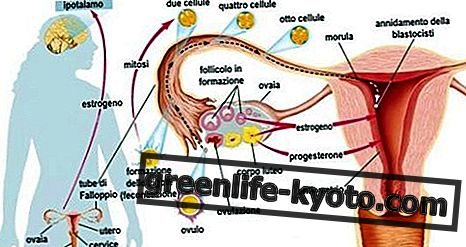
In 2015, on the occasion of the 70th anniversary of the foundation of the United Nations, in line with similar recent initiatives of the World Health Organization, the 2016-2030 global intervention plan for the sexual and reproductive health of women and adolescents was presented.
The overlap of these proposals and recurrences, certainly not casual, indicates that the attention towards this theme seems to have reached a full awareness, an invitation to operators of various fields and competences, as well as to politicians, to intervene on a strategic theme.
Taking care of the reproductive and sexual prevention and health of women and adolescents is in fact an investment in the future, in the literal sense that the new generations pass through and derive from the current feminine one.
Special emphasis was given, in the context of these programs, to the adolescent age group, in many respects unjustly less the focus of attention. In fact, if reproductive interventions for the former and general protection for the latter have been developed for adult women and girls, these have often been limited and limited for adolescents.
Today, in the face of a world-wide demographic structure in which the range of adolescents, from 12 to 18 years (but some classifications place the extremes of adolescence at 10 and 19 years), includes a very large amount of population - about a billion and a half people - intervention and prevention initiatives must be considered inferior to the needs.
The first error consisted in fragmenting this demographic band into "almost little girls" and into "almost adults", not only ignoring the characteristics of this individual evolutionary phase but also underestimating the geographical and cultural differences.
In some areas, a fourteen-year-old girl is classified as a child and treated as such, in other areas she is considered a woman and probably has already had a pregnancy.
The first awareness to be acquired should be that of the specificity of the vital period of adolescence, with the typicality of anatomical, psychological and social transformations and the relative instabilities, sensitivities and contradictions, all harbingers of potential risks.
To give a concrete idea, according to UN data, in developing countries, one girl out of three marries before she is 18, putting health, education and future prospects at risk.
Early pregnancies are associated with teenage pregnancies, with all that this entails in health terms and beyond. Almost half of all sexual abuse is perpetrated on girls under the age of 16 . Just as girls and adolescents are subjected to genital mutilation and to the highest risk of contracting HIV / AIDS or other sexually transmitted diseases.
The second awareness to be acquired is that ignoring the potential risks for such a large population has very high costs, both human and economic. Reducing the risks involves actions of prevention, information, education, whose costs are in fact significantly lower than those of lives in disarray, of sick people to be treated, of future adult women at risk.
In order not to ignore the risks, obviously, we must observe reality and intervene, not pretend not to see or know in the name of alleged cultural or religious justifications.
Even with the diversification of age and place, there are the themes of violence, sexuality, contraception, pregnancies which, perhaps uncomfortable to some, do not for that reason disappear from the real world. The effort to carry out targeted interventions, which are respectful of adolescent characteristics and which capture the needs of a changing world, should involve everyone, without abstentions or hypocritical "abstentions". In this, the persistence and resurgence of social and even sanitary visions subordinate to the various religions certainly constitutes an obstacle that in some areas of the world is relevant.
A third awareness to be acquired, more tied to the social and cultural system, is the need not to think that adolescents exist almost only for advertising campaigns and for consumption (in rich countries), sometimes courted by political movements or exploited for the work or war (especially in poor countries) but still poorly respected by both.
Not only that, adolescents are also subject-objects of social and juridical norms that are not often contradictory, in some cases they are assimilated to adults in others they are without autonomy.
The behavioral fluidity and the speed of transformation of people in that age phase is known, the absence of clear transition phases ("the rites of passage" of anthropological memory) in many societies makes the boundaries even more vague and the rules approximate, especially with regard to reproduction and sexuality.
Attention to the issue of sexual and reproductive health concerns not only the sexual sphere in the strict sense, but refers to the broader theme of health education.
Educating to sexuality means, first of all, transmitting and acquiring scientific knowledge that helps to avoid behaviors that can potentially generate infections, diseases or unwanted pregnancies and encourage a lifestyle based on safeguarding health.
Secondly, it means above all to educate individuals to the "responsibility" of their sexual behavior, through the knowledge of the risks they are taking, to a good relationship with themselves and to an active and conscious role in the expression of their sexuality.
People have the right to lead a conscious, safe and satisfying sex life .
To do this it is necessary that they be informed, have access to safe methods for contraception, adequate health services and specialized support. In particular, during adolescence, a fundamental moment in the development of the personality of the individual and his concept of health, the approach to a "good" education and the encounter with adequate socio-health structures, can counteract some of the main problems typical of this age group (eating and sexual disorders).
In both developed and developing countries, where access to education is unfortunately limited in particular for girls, sexuality education should become a fundamental part of the general educational path. Providing sexual and reproductive education means greater prevention and well-being for all.
There is a close relationship between these two issues, for example, an early pregnancy can interrupt the schooling (a phenomenon that is particularly relevant in developing countries, where early school leaving and illiteracy have appalling numbers) and consequently greatly reduce possibility of female economic autonomy due to lack of access to the labor market where possible, while treatment costs for sexual and reproductive problems aggravate individual and family poverty.
Indeed, the promotion of sexual and reproductive health has a positive effect on the life of the whole community and should inevitably begin during adolescence. Education of adolescents also means preventing illness (their own and that of their children), often due to a lack of knowledge of common hygiene rules; it means preventing gender-based violence, providing women and men with adequate information tools.













